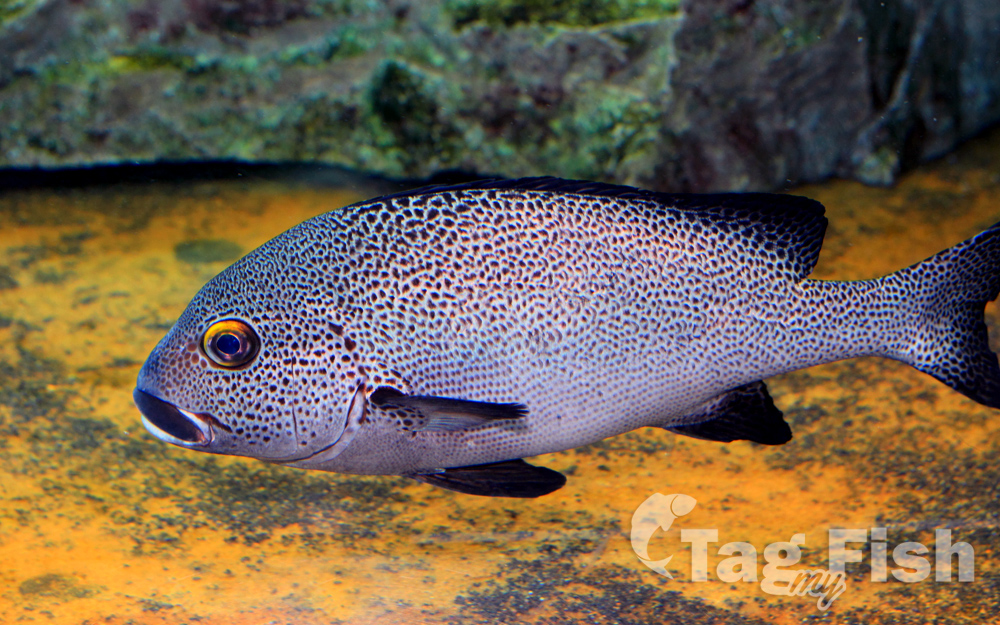Painted sweetlip
(Plectorhinchus picus)

Classification
General data
Plectorhinchus pica, the painted sweetlips, dotted sweetlips, magpie sweetlips or spotted sweetlips, is a species of marine ray-finned fish, a sweetlips belonging to the subfamily Plectorhinchinae, one of two subfamilies in the family Haemulidae, the grunts. It is native to coral reefs of the Indian Ocean and the western Pacific Ocean. It is a commercially important species and can be found in the aquarium trade.
Description
Plectorhinchus pica has fleshy lips which swell with age. There are 6 pores on its chin bit there is no median pit. The dorsal fin contains 12-14 spines and 17-20 soft rays while the anal fin has 3 spines and 7-8 soft rays. The adults are patterned with dark brown spots which cover the head, back, flanks and fins. They have a dark brown to blackish dorsal fin which has large black spots and a central longitudinal grey stripe which is on the membranes but not the spines or rays, at the base of the pectoral and pelvic fins there is a patch of bright red in some individuals. The inside of the mouth, the rear margin of the maxilla, and the gill membranes are scarlet to reddish-brown. The underparts are abdomen is pale greyish purple. The juveniles are white below and black above, the black being broken by a white snout and white saddle marks and spots. This species attains a maximum total length of 84 cm (33 in), although 70 cm (28 in) is more typical.
Distribution
Plectorhinchus pica is found in the Indo-Pacific region from the Socotra, Seychelles, the Comoros Islands, Madagascar, and Mauritius east into the Pacific Ocean to the Society Islands, in the Pacific it ranges north to southern Japan and Ogasawara Islands, south to Australia, New Caledonia, and Rapa Iti. In Australian waters this species is found along the Great Barrier Reef as far south as Jervis Bay in New South Wales, with juveniles being recorded south to Barunguba / Montague Island, they are also found at Lord Howe Island in the Tasman Sea.











